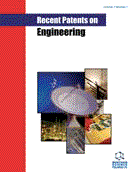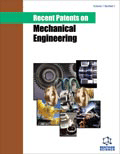Abstract
Background: The study of kerosene fuel for gasoline engines is of great significance to the supply, management, storage, transportation of military fuel, as well as its safety. A small aviation twostroke kerosene engine fuel injection controller is the key technology of kerosene engines. It is very important to improve the performance of kerosene engine by controlling the air-fuel ratio accurately.
Objective: In this study, the initial injection pulse spectrum was firstly obtained by numerical calculation in the absence of kerosene injection pulse spectrum, and then the injection controller was designed based on the initial injection pulse spectrum.
Methodology: Firstly, a numerical model of the whole engine was established by using BOOST software. The air mass flow data of the inlet was obtained through numerical calculation. The amount of initial engine fuel injection was calculated according to the requirements of air-fuel ratios in each working condition, from which an initial injection pulse spectrum was obtained. Then, based on Freescale 16-bit embedded micro-controller MC9S12DP512, a kerosene engine fuel injection controller was developed, together with the circuit. According to the initial fuel injection pulse spectrum, a twodimensional interpolation algorithm was developed by using assembly language and C language mixed programming, and the anti-electromagnetic interference ability of the controller was further enhanced. Finally, the accuracy of the initial injection pulse spectrum and the performance and reliability of the injection controller of the kerosene engine were verified by the kerosene engine bench test.
Results: The experimental results show that the numerical model was accurate, and the development time of the injection controller reduced by using the numerical model to calculate the initial injection pulse spectra.
Conclusion: The developed controller was observed to be stable and reliable, which can meet the control requirement.
Keywords: Two-stroke engine, kerosene, injection controller, initial injection pulse spectrum, reliability, small aviation.
Graphical Abstract
Recent Patents on Engineering
Title:Development of a Small Aviation Two-stroke Kerosene Engine Fuel Injection Controller
Volume: 14 Issue: 4
Author(s): Linlin Chen, Qun Sun*, Weidong Gao and Chong Wang
Affiliation:
- School of Mechanical and Automotive Engineering, Liaocheng University, Liaocheng,China
Keywords: Two-stroke engine, kerosene, injection controller, initial injection pulse spectrum, reliability, small aviation.
Abstract:
Background: The study of kerosene fuel for gasoline engines is of great significance to the supply, management, storage, transportation of military fuel, as well as its safety. A small aviation twostroke kerosene engine fuel injection controller is the key technology of kerosene engines. It is very important to improve the performance of kerosene engine by controlling the air-fuel ratio accurately.
Objective: In this study, the initial injection pulse spectrum was firstly obtained by numerical calculation in the absence of kerosene injection pulse spectrum, and then the injection controller was designed based on the initial injection pulse spectrum.
Methodology: Firstly, a numerical model of the whole engine was established by using BOOST software. The air mass flow data of the inlet was obtained through numerical calculation. The amount of initial engine fuel injection was calculated according to the requirements of air-fuel ratios in each working condition, from which an initial injection pulse spectrum was obtained. Then, based on Freescale 16-bit embedded micro-controller MC9S12DP512, a kerosene engine fuel injection controller was developed, together with the circuit. According to the initial fuel injection pulse spectrum, a twodimensional interpolation algorithm was developed by using assembly language and C language mixed programming, and the anti-electromagnetic interference ability of the controller was further enhanced. Finally, the accuracy of the initial injection pulse spectrum and the performance and reliability of the injection controller of the kerosene engine were verified by the kerosene engine bench test.
Results: The experimental results show that the numerical model was accurate, and the development time of the injection controller reduced by using the numerical model to calculate the initial injection pulse spectra.
Conclusion: The developed controller was observed to be stable and reliable, which can meet the control requirement.
Export Options
About this article
Cite this article as:
Chen Linlin , Sun Qun *, Gao Weidong and Wang Chong , Development of a Small Aviation Two-stroke Kerosene Engine Fuel Injection Controller, Recent Patents on Engineering 2020; 14 (4) . https://dx.doi.org/10.2174/1872212113666191008113331
| DOI https://dx.doi.org/10.2174/1872212113666191008113331 |
Print ISSN 1872-2121 |
| Publisher Name Bentham Science Publisher |
Online ISSN 2212-4047 |
 11
11
- Author Guidelines
- Bentham Author Support Services (BASS)
- Graphical Abstracts
- Fabricating and Stating False Information
- Research Misconduct
- Post Publication Discussions and Corrections
- Publishing Ethics and Rectitude
- Increase Visibility of Your Article
- Archiving Policies
- Peer Review Workflow
- Order Your Article Before Print
- Promote Your Article
- Manuscript Transfer Facility
- Editorial Policies
- Allegations from Whistleblowers
- Announcements
Related Articles
-
Patent Selections
Recent Patents on Cardiovascular Drug Discovery Pathophysiology of Ischemic Stroke: Role of Oxidative Stress
Current Pharmaceutical Design Telomere/Telomerase System: A New Target of Statins Pleiotropic Effect?
Current Vascular Pharmacology Synthesis and Evaluation of in vitro Antiplatelet Aggregation Activities of 2-Methoxy-5-Aminobenzamides
Letters in Drug Design & Discovery Pathophysiology of Atherosclerosis: The Role of Inflammation
Current Pharmaceutical Design Adenosine Neuromodulation and Traumatic Brain Injury
Current Neuropharmacology Noble metal-dithiocarbamates precious allies in the fight against cancer
Mini-Reviews in Medicinal Chemistry Endothelial Dysfunction and Coronary Vasoreactivity - A Review of the History, Physiology, Diagnostic Techniques, and Clinical Relevance
Current Cardiology Reviews Mast Cell Chymase and Tryptase as Targets for Cardiovascular and Metabolic Diseases
Current Pharmaceutical Design A Combination of Two Antioxidants (An SOD Mimic and Ascorbate) Produces a Pro-Oxidative Effect Forcing Escherichia coli to Adapt Via Induction of oxyR Regulon
Anti-Cancer Agents in Medicinal Chemistry Clinical Assessment of Central Blood Pressure
Current Hypertension Reviews Inducible Nitric Oxide Synthase and Vein Graft Performance in Patients Undergoing Coronary Artery Bypass Surgery: Physiological or Pathophysiological Role?
Current Vascular Pharmacology Myelin Injury and Degraded Myelin Vesicles in Alzheimer’s Disease
Current Alzheimer Research Targeting Cyclooxygenase and Nitric Oxide Pathway Cross-Talk: A New Signal Transduction Pathway for Developing More Effective Anti- Inflammatory Drugs
Current Signal Transduction Therapy Kinases as Targets for ENaC Regulation
Current Molecular Pharmacology Deciphering the Physiology Underlying the Rapid Clinical Effects of Perispinal Etanercept in Alzheimers Disease
Current Alzheimer Research Therapeutic Potential of the Modulation of Sphingosine-1-Phosphate Receptors
Current Medicinal Chemistry A Review of Selected Adult Congenital Heart Diseases Encountered in Daily Practice
Current Cardiology Reviews Role of Citicoline in Promoting the Repair of Acute Peripheral Nerve Injury in Rat Models
Neuroscience and Biomedical Engineering (Discontinued) Biotransformations of Prenylated Hop Flavonoids for Drug Discovery and Production
Current Drug Metabolism





















